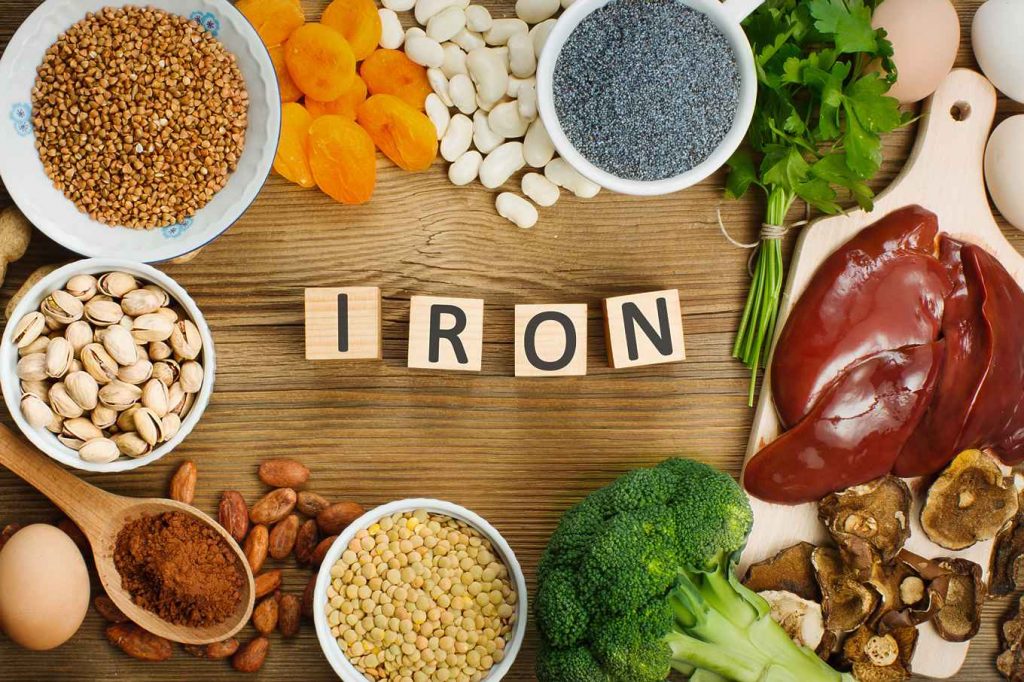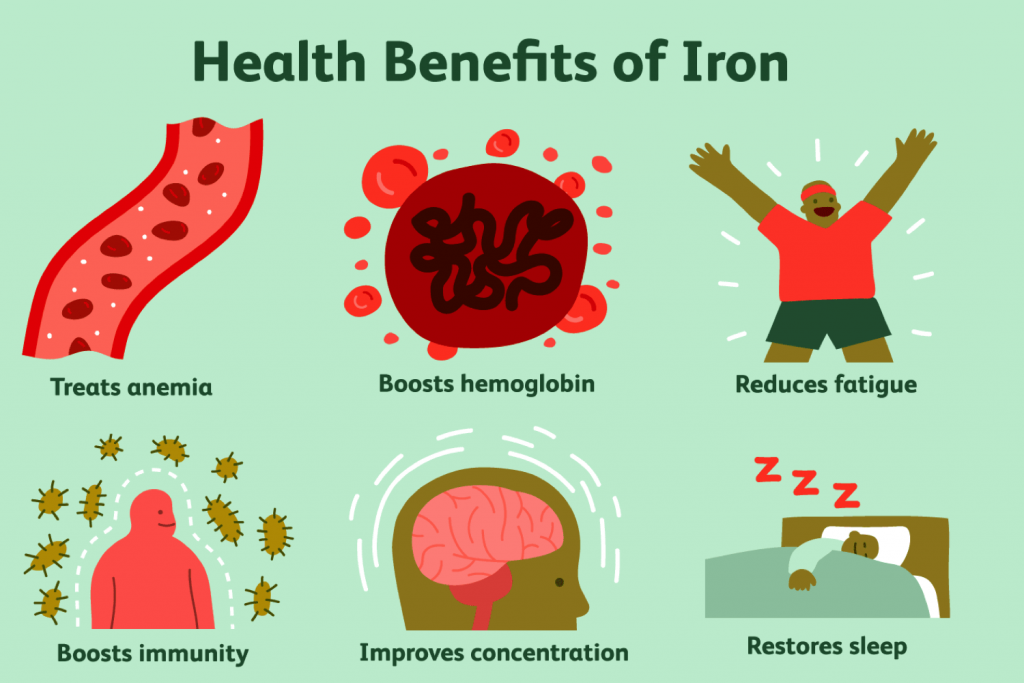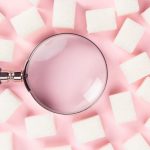Human body cannot do without iron – responsible for our healthy and full of energy. One of the components of hemoglobin, we majorly acquire it through our diet.[1]

It’s also why a few dietary changes may mean that your body isn’t getting enough of this mineral.[2]
When the body doesn’t get enough iron from food or supplements, it fails to make hemoglobin, leading to anemia – a low level of blood cells, including other symptoms like tiredness, low concentration, and frequent illness, to name a few.[3]
This write-up describes all about dietary iron and iron supplements – the facts, the causes, the symptoms, and the body of the food you must eat, can benefit from them.[4]
Why is it necessary for people to take iron?
Deficiency of iron in the body can lead to various diseases, predominantly a severe condition known as Iron Deficiency Anemia (IDA).[5]
Doctors recommend dietary iron or iron supplements to treat anemia caused by:
- Heavy blood loss during mensuration cycle.
- Childbirth.
- Infants and young children.
- Those with kidney failures (especially people who are on dialysis).
- People who are above 65.
- People who are on blood thinner medications like Plavix®, aspirin, Coumadin® or herapin.
- People going through Chemotherapy.
- People with blood disorders, such as thalassemia or sickle cell anemia.
- People following a vegetarian or vegan diet.
- Those who have undergone gastric surgery.
- People with alcoholism.
Stages of iron deficiency
Low iron deficiency progresses to severe iron deficiency anemia through these following stages.[6]
Stage 1
Mild iron deficiency: This condition consists of normal blood cell (RBC) count with hemoglobin exceeding 12 g/dL, iron stores with ferritin levels between 10-30 mcg/L, and hematocrit above 41% in men and 36% in women.[7]
Stage 2
Mild functional iron deficiency: Depleted iron stores follow this stage – with ferratin levels lower than 10mcg/L, hematocrit above 41% for men and 36% in women, and normal red blood cell count with hemoglobin above 12g/dL.
Stage 3
Iron deficiency anemia: This stage is followed by red blood cell count falling below normal with the hemoglobin below 12g/dL, ferratin levels lower than 10mcg/L, and hematocrit below 41% in men and 36% in women. This is the stage when severe iron deficiency anemia (IDA ) kicks in and demands immediate medical attention.[8]
What is oral iron supplementation?
When dietary measures are not enough, individuals must take different supplements like capsules, pills, and extended-release tablets. The primary purpose behind this is to treat the symptoms by increasing the iron and hemoglobin level in the body.
Tip: The iron in your body is known as “elementary iron.” Whenever you buy any iron supplement, be sure to check the level of iron contained in it. Don’t forget to consult your doctor or any other medical practitioners before you start with the dose.[9]
How is anemia diagnosed?
The diagnosis of anemia starts with blood tests suggested by your healthcare provider. The type and the number of blood tests will depend on the type of anemia the doctor may assume you might have, taking into consideration the symptoms and side effects.
According to the blood test report, the doctor will measure your hemoglobin and iron deficiency level and suggest anemia diagnosis accordingly.
How often should I get my test?
Those with no medical history of iron deficiency can get their iron level tested once per year to detect any potential deficiency in the early stages.[10]
If you’re taking supplements, your hemoglobin level should improve within 4 weeks. However, it takes at least 3 months or even longer to satiate hemoglobin levels and ferritin levels. So, if you’re on iron deficiency supplements, you should wait for at least 3 months before going for a retest.[11]
There is also a small chunk of people who neither respond to oral supplements nor experience any side effects. In such cases, you should look for other forms of treatment.
With that being said, if you’re suffering from Iron Deficiency Anemia and don’t witness any improvement within the first 4-5 weeks of taking iron supplements, you should definitely get your hemoglobin retested to check whether your body is responding to the treatment.[12]

What foods are high in iron?
For most people, a good and healthy diet provides enough iron.[13] The following foods are rich in iron, and you should include them in your daily diet if you’re suffering from IDA or otherwise:
• Kidney beans
• Tofu
• Oysters
• Turkey leg
• Whole wheat bread
• Beef (lean ground beef, chuck roast)
• Eggs
• Tuna
• Peanut butter
• Shrimp
• Brown rice
• Leg of lamb
• Blackstrap molasses
• Raisin bran
• Beans
• Lentils
• Spinach
Iron from animals is absorbed by the body better. In case you’re a vegetarian, you can go fir plant-based iron by including fruits and vegetables rich in Vitamin C.[14]
What are the risks of taking a heavy iron dose?
Anything taken in excess can make the situation worse. Here are a few risks of taking unprescribed iron supplements.[15]
- Overdose: Iron overdose can have adverse side effects on anyone, especially children. It can be fatal. Severe vomiting, stomach cramps, diarrhea, pale skin, and fingernails and weakness are some of the common symptoms of an iron overdose and should be treated with an immediate medical emergency.
- Risks: Taking iron supplements without medical practitioners’ prescriptions can result in severe cases like organ failure, coma, and even death. Women who are in the process of getting pregnant should never start taking daily iron supplements without proper medical guidance.
- Side effects: Taking regular iron supplements at a normal dose without proper medical guidance can cause digestive issues, changes in stool, reduce the capacity to absorb other nutrients in the gut.
- Interactions: Iron can interact with different supplements and drugs, including antacids, some antibiotics, calcium, and proton pump inhibitors and others. Ensure you consult your doctor before buying over the counter iron supplements if you’re already on other medications.
The bottom line
When dietary changes are unsuccessful to suffice the need for iron in the body, iron supplements can do the trick for you.[16]
Who are more prone to suffer? Studies suggest that pregnant women, infants, and young children as well as heavy exercisers, and people ailing from other medical conditions are prone to suffer from iron deficiency. If you fall in one of these groups, get yourself checked for iron deficiency regularly.[17] If you’re pondering to get your iron level tested, our advice would be to go for a hemoglobin and hematocrit test and a ferritin test. This will help you get in detailed information about the deficiency and identify
[1] https://www.ncbi.nlm.nih.gov/books/NBK540969/
[2] von Drygalski A, Adamson JW. Iron metabolism in man. JPEN J Parenter Enteral Nutr. 2013 Sep;37(5):599-606. [PubMed]
[3] Coad J, Pedley K. Iron deficiency and iron deficiency anemia in women. Scand. J. Clin. Lab. Invest. Suppl. 2014;244:82-9; discussion 89. [PubMed]
[4] https://pubmed.ncbi.nlm.nih.gov/29611716/
[5] Hunt JR, Zito CA, Johnson LK. Body iron excretion by healthy men and women. Am. J. Clin. Nutr. 2009 Jun;89(6):1792-8. [PubMed]
[6] https://www.ncbi.nlm.nih.gov/pmc/articles/PMC5155616/
[7] Hunt JR, Roughead ZK. Adaptation of iron absorption in men consuming diets with high or low iron bioavailability. Am. J. Clin. Nutr. 2000 Jan;71(1):94-102. [PubMed]
[8] https://www.ncbi.nlm.nih.gov/books/NBK557376/
[9] Singh B, Arora S, Agrawal P, Gupta SK. Hepcidin: a novel peptide hormone regulating iron metabolism. Clin. Chim. Acta. 2011 May 12;412(11-12):823-30. [PubMed]
[10] Dainty JR, Berry R, Lynch SR, Harvey LJ, Fairweather-Tait SJ. Estimation of dietary iron bioavailability from food iron intake and iron status. PLoS ONE. 2014;9(10):e111824. [PMC free article] [PubMed]
[11] https://www.ncbi.nlm.nih.gov/pmc/articles/PMC3999603/
[12] https://www.ncbi.nlm.nih.gov/pmc/articles/PMC2582401/
[13] Hurrell R, Egli I. Iron bioavailability and dietary reference values. Am. J. Clin. Nutr. 2010 May;91(5):1461S-1467S. [PubMed]
[14] Lynch SR, Hurrell RF, Dassenko SA, Cook JD. The effect of dietary proteins on iron bioavailability in man. Adv. Exp. Med. Biol. 1989;249:117-32. [PubMed]
[15] Björn-Rasmussen E, Hallberg L. Effect of animal proteins on the absorption of food iron in man. Nutr Metab. 1979;23(3):192-202. [PubMed]
[16] Lynch SR, Cook JD. Interaction of vitamin C and iron. Ann. N. Y. Acad. Sci. 1980;355:32-44. [PubMed]
[17] Conrad ME, Schade SG. Ascorbic acid chelates in iron absorption: a role for hydrochloric acid and bile. Gastroenterology. 1968 Jul;55(1):35-45. [PubMed]

